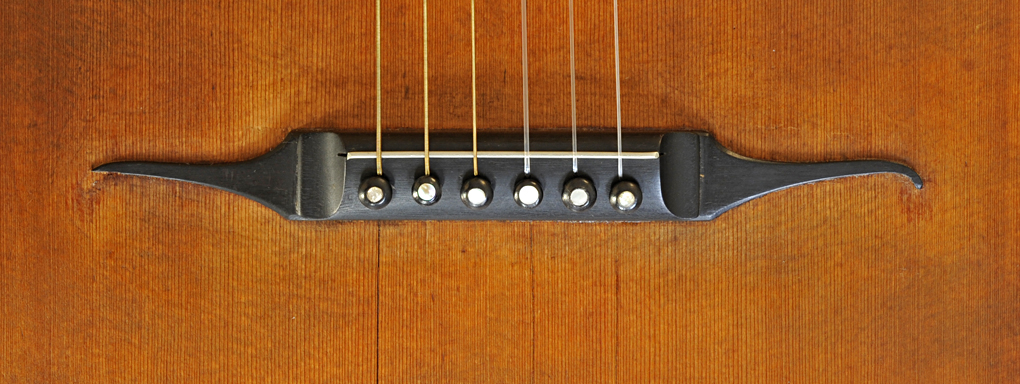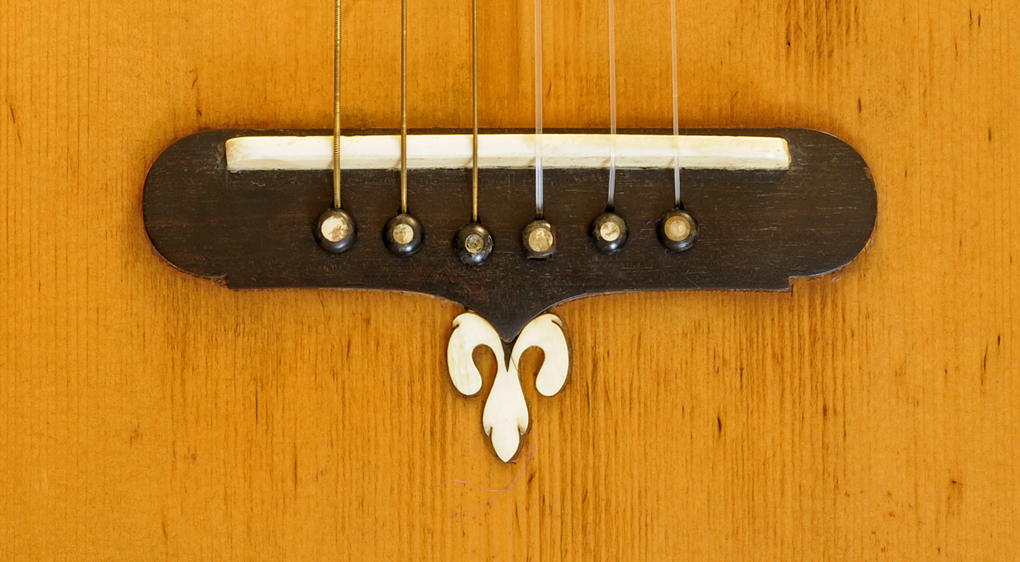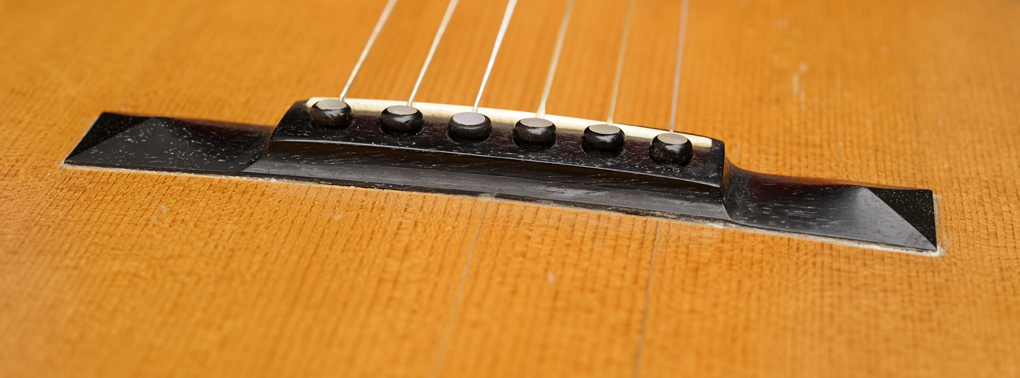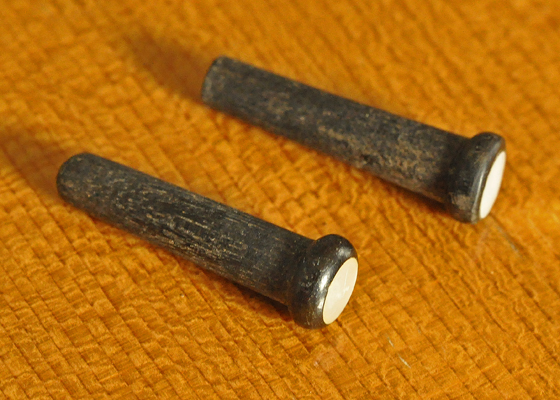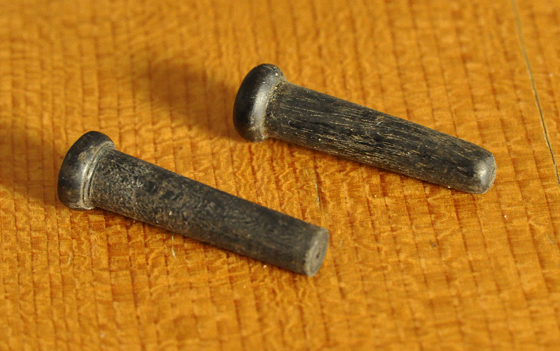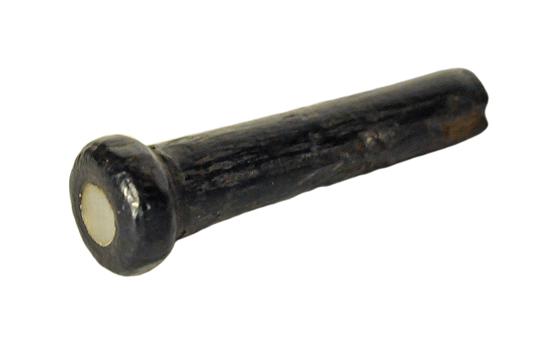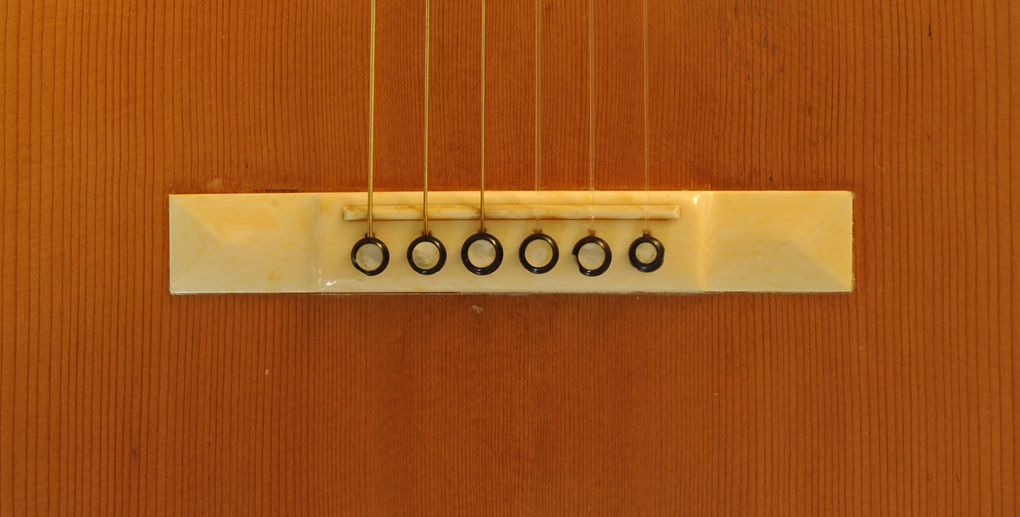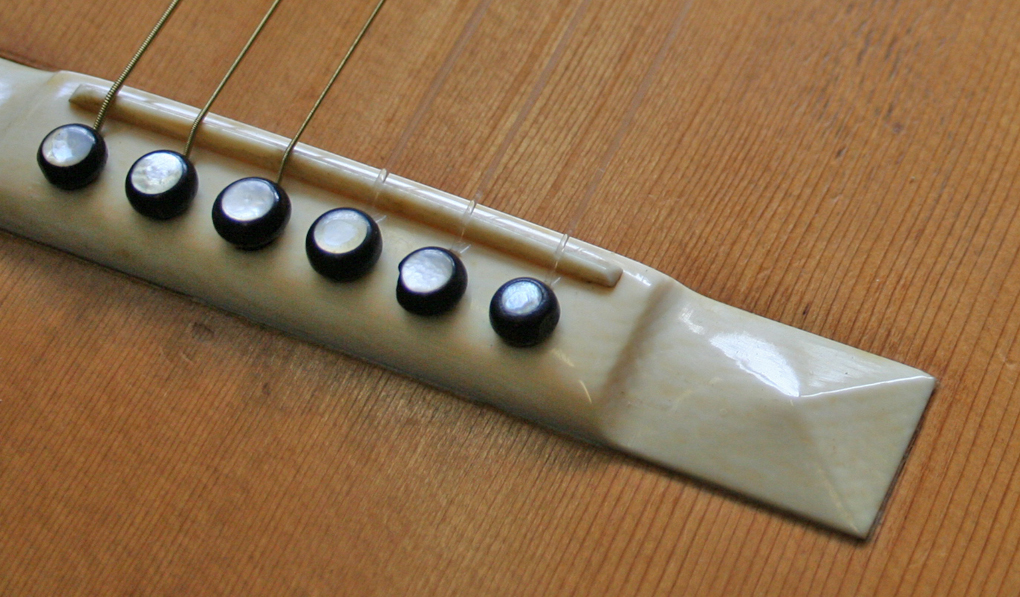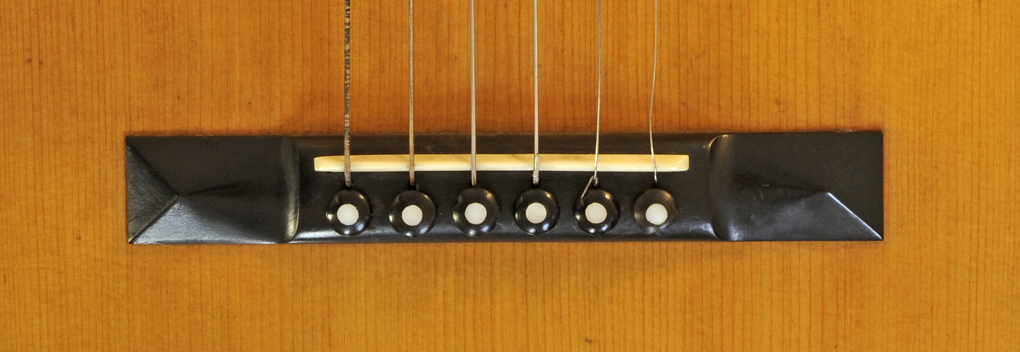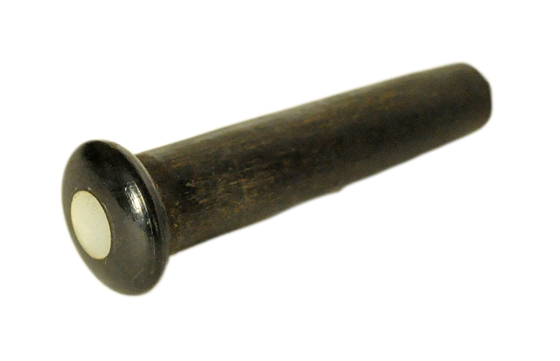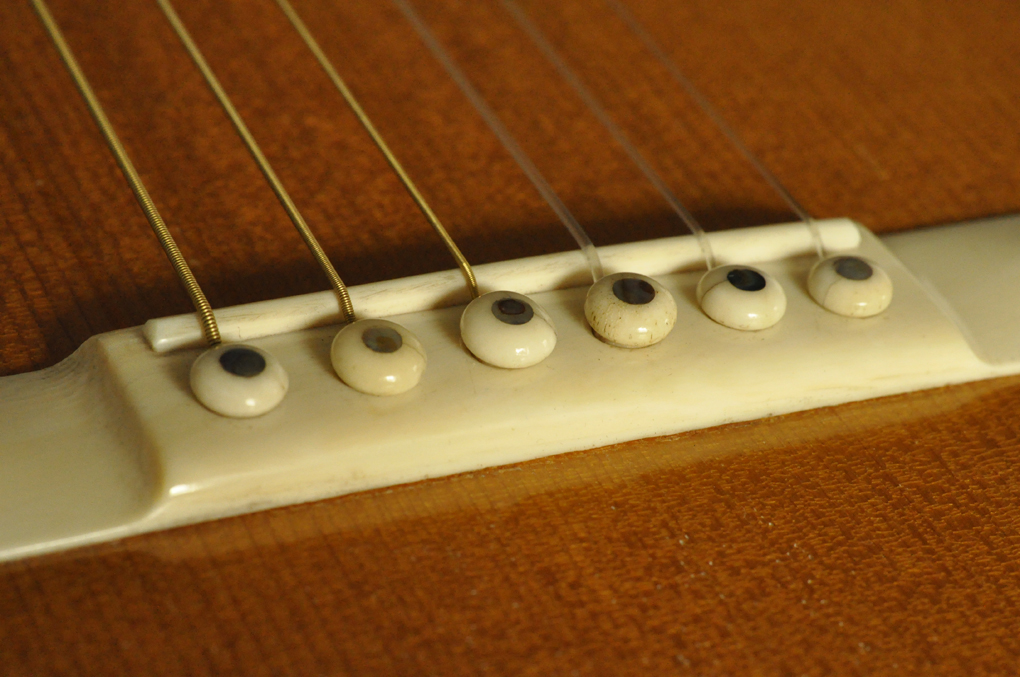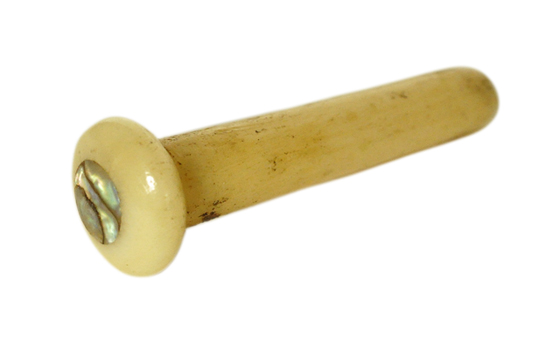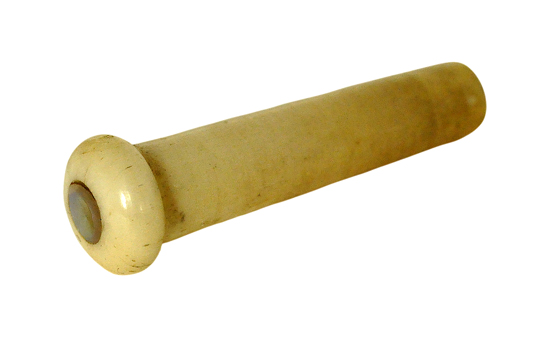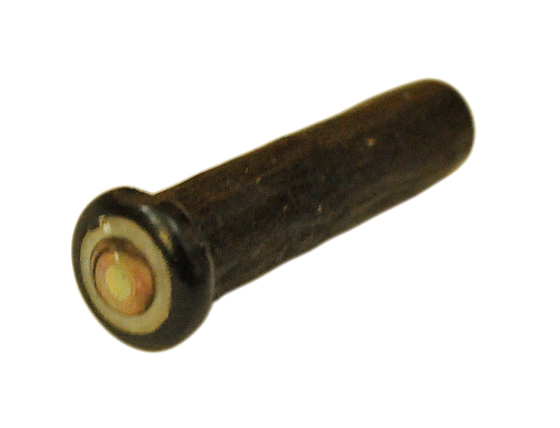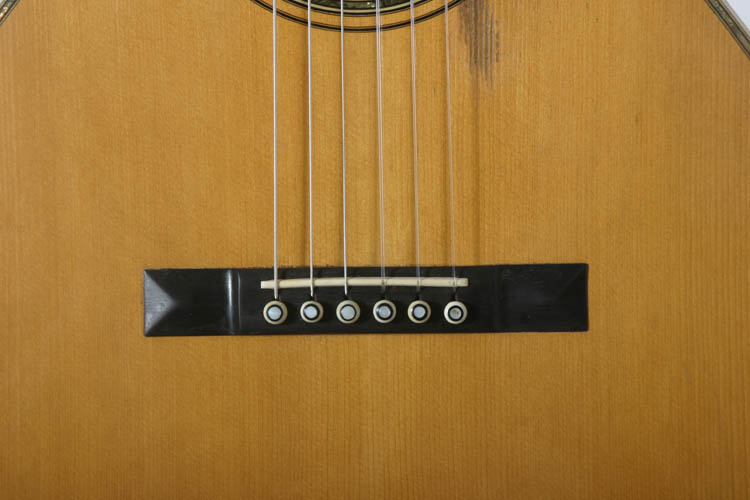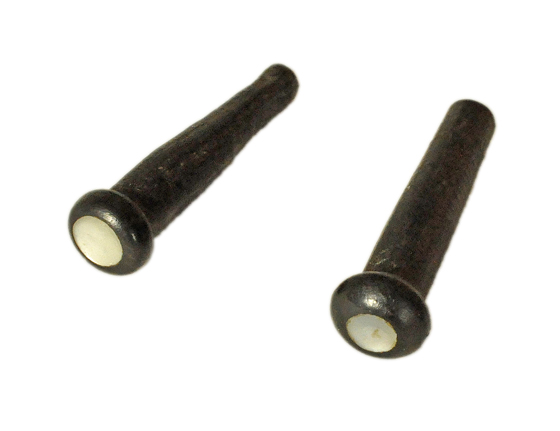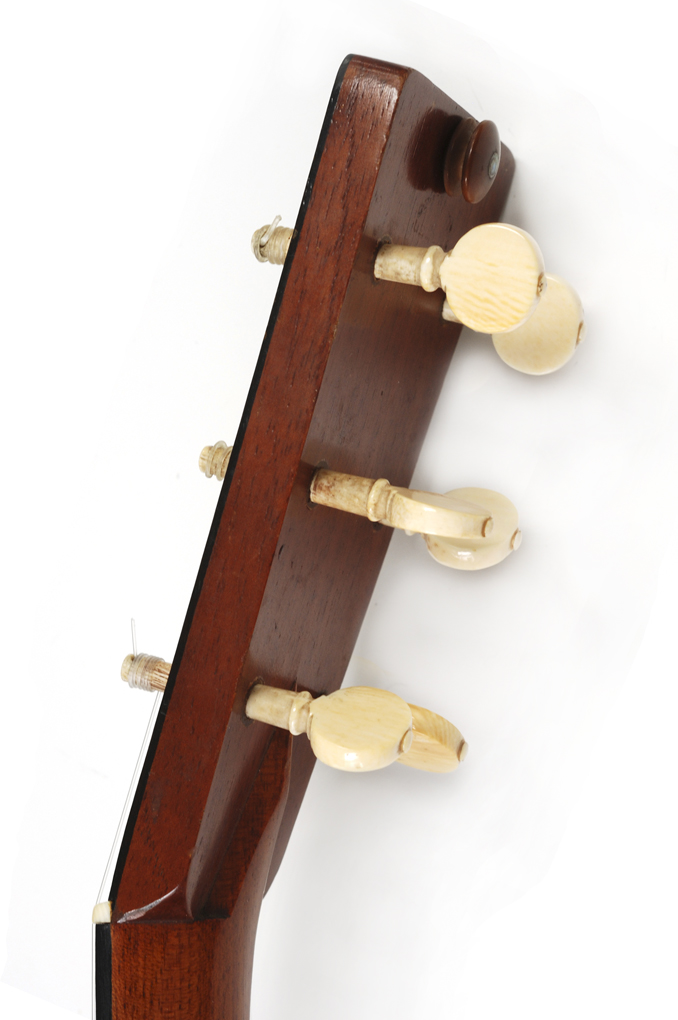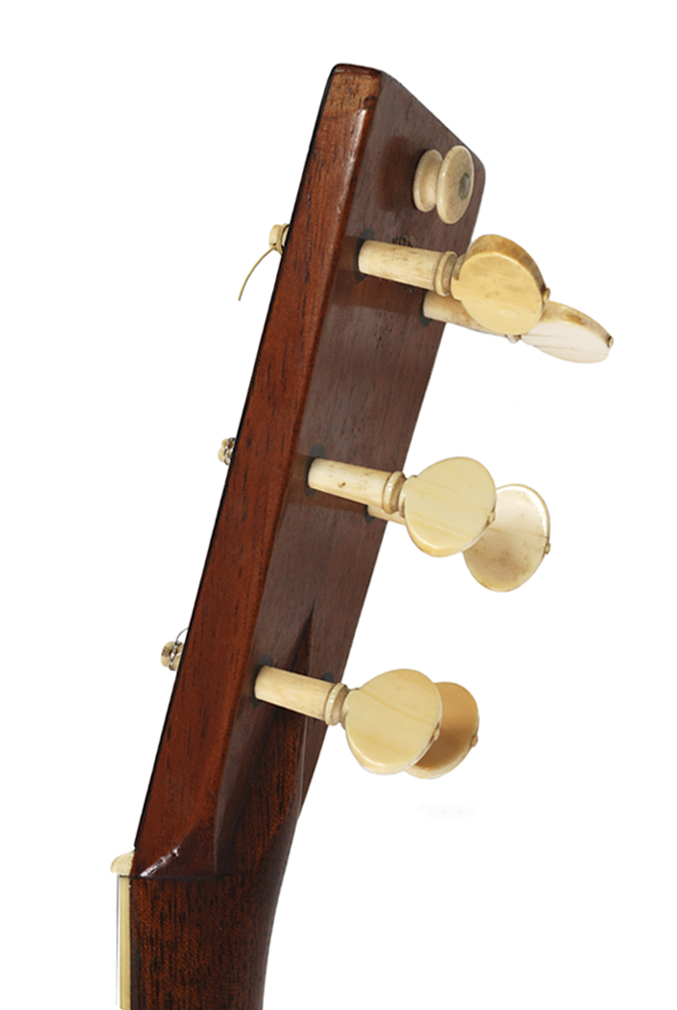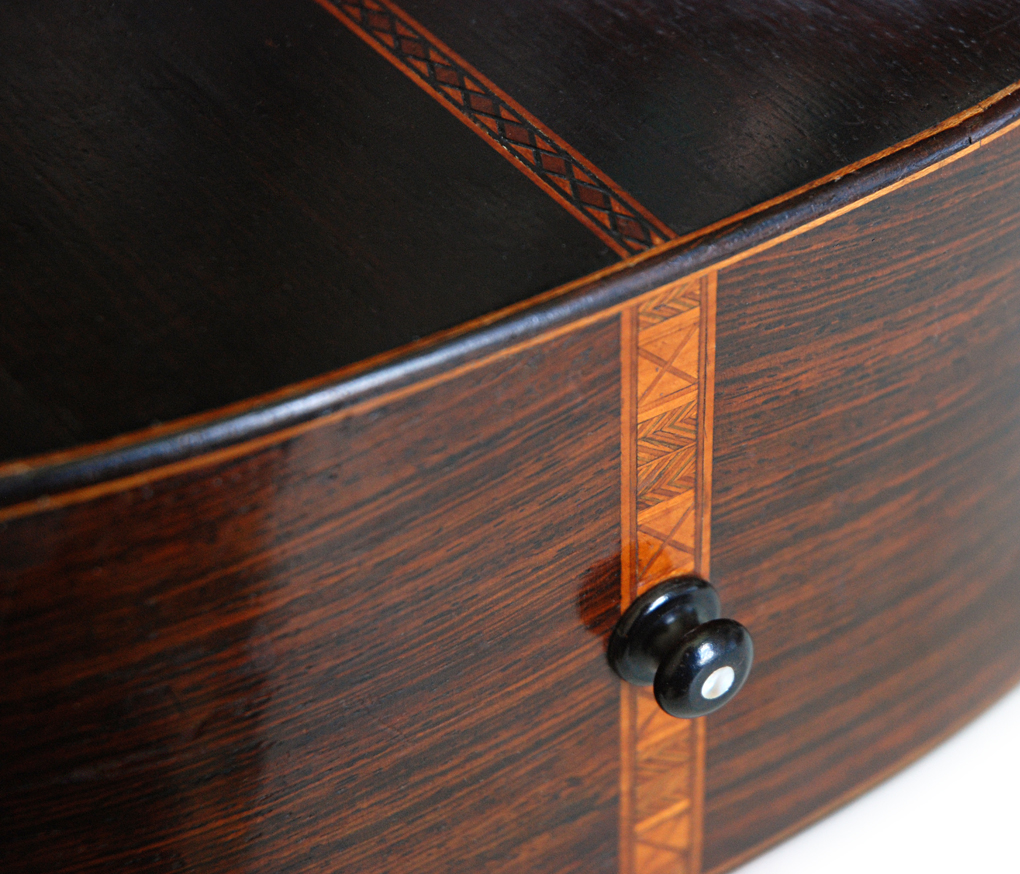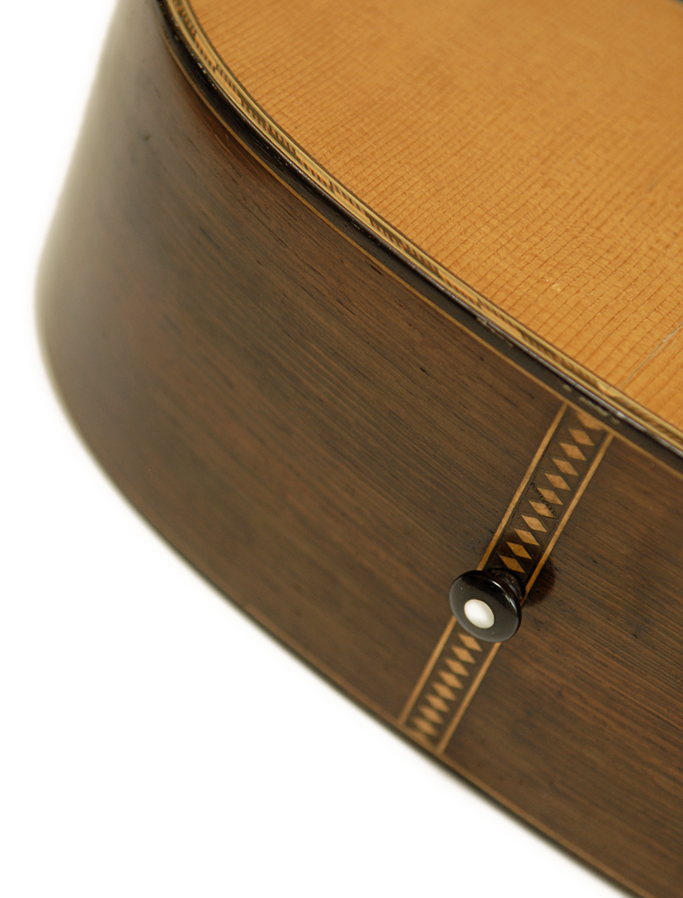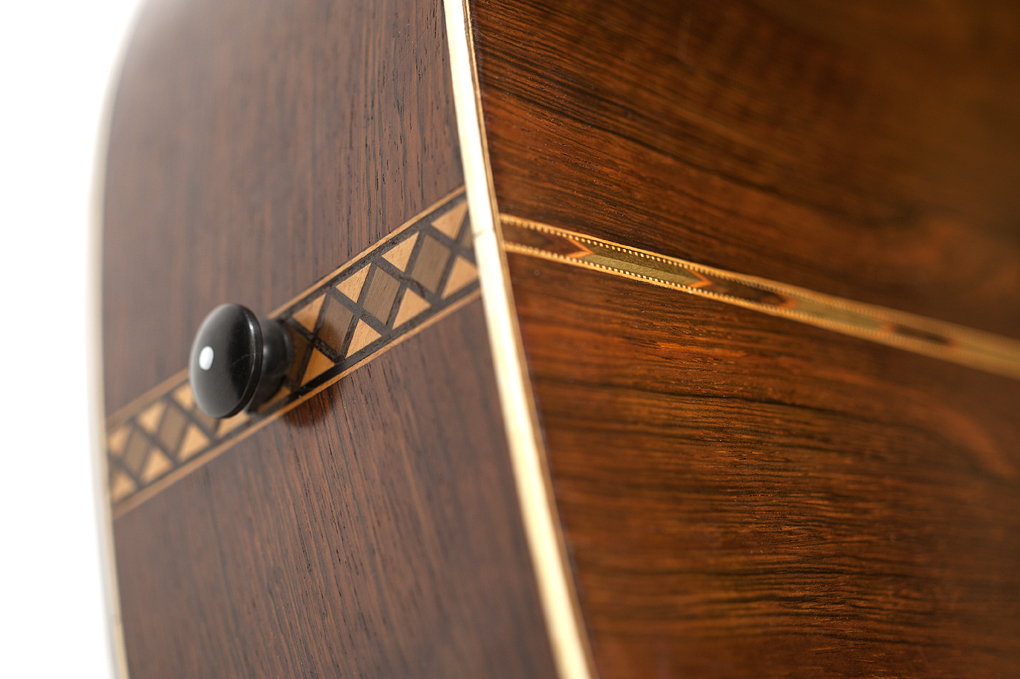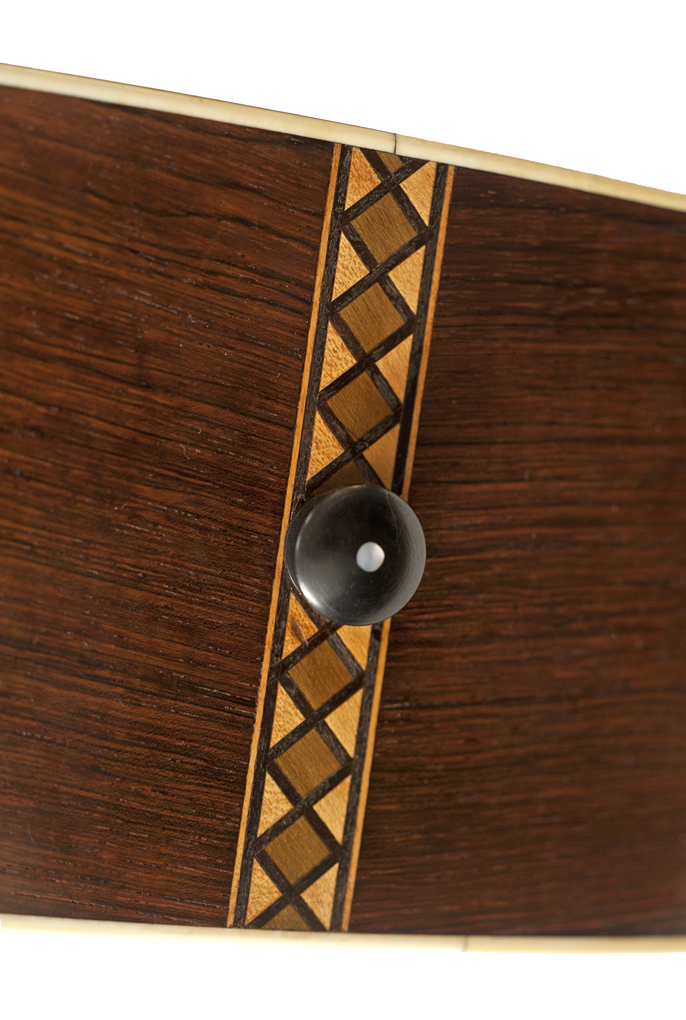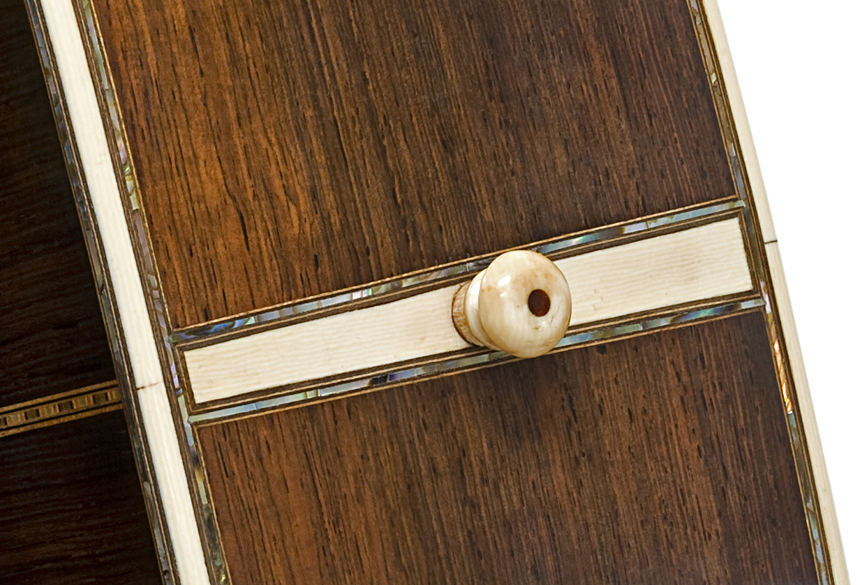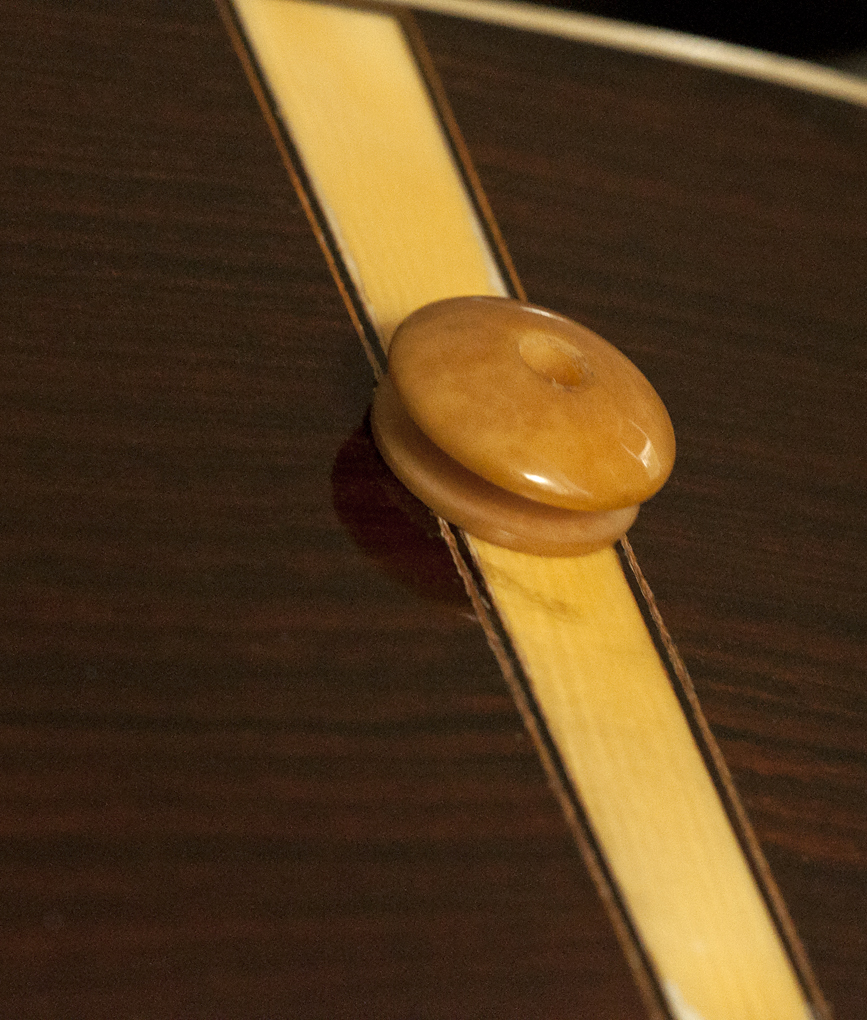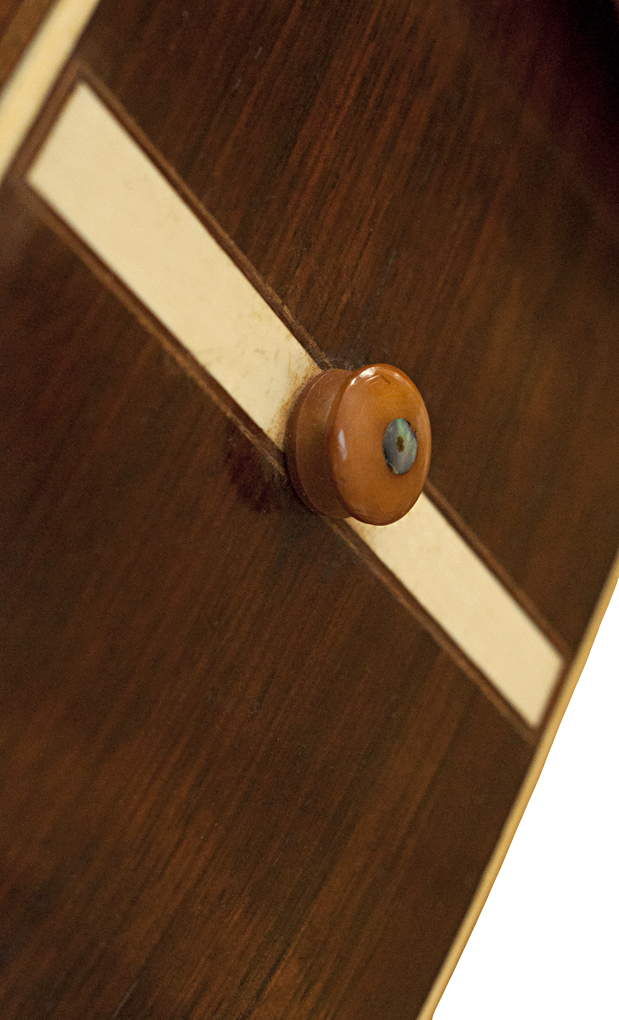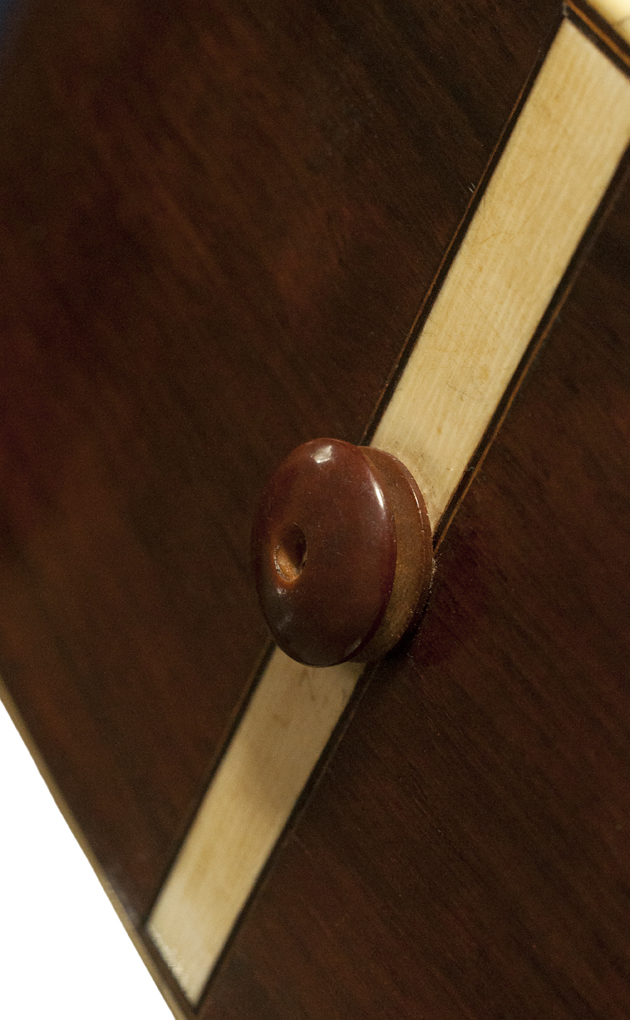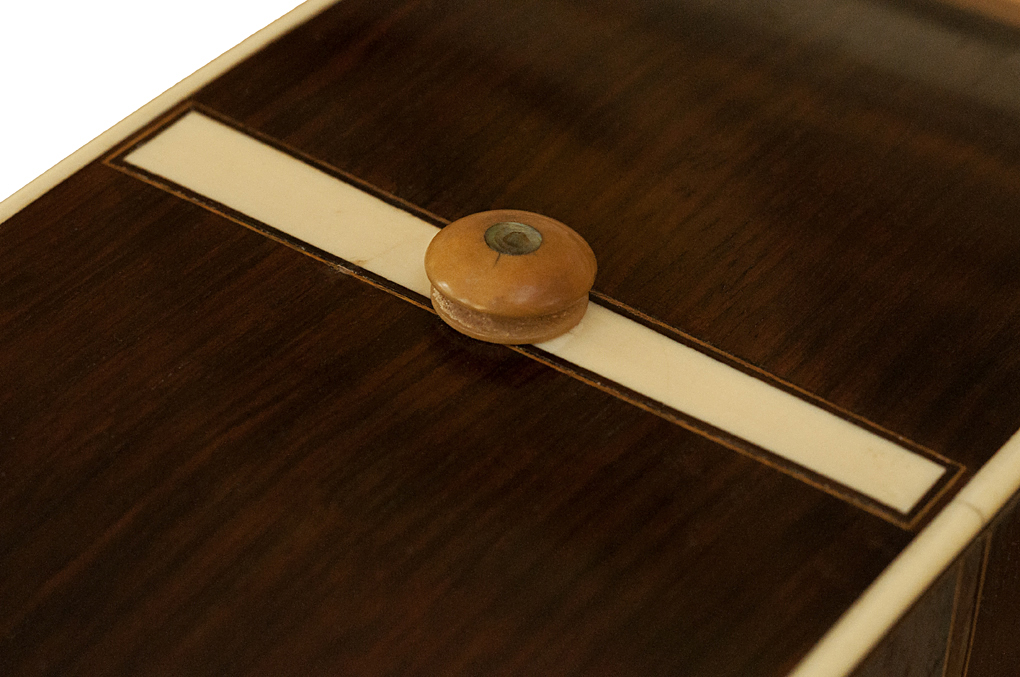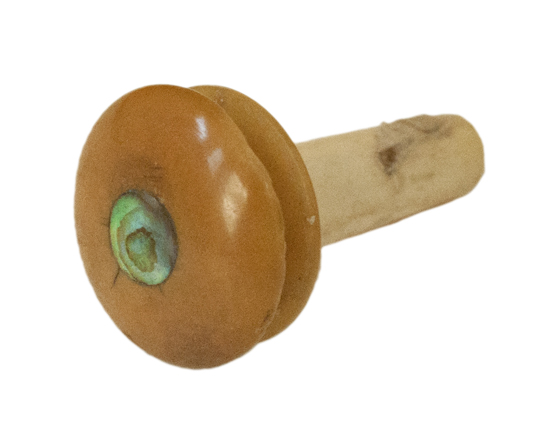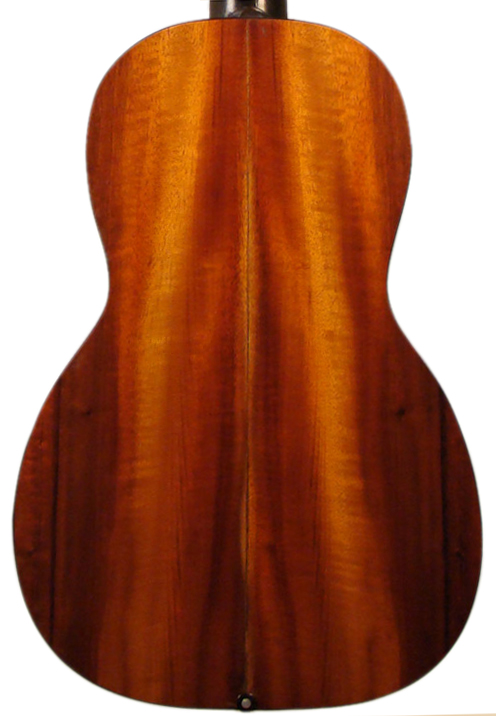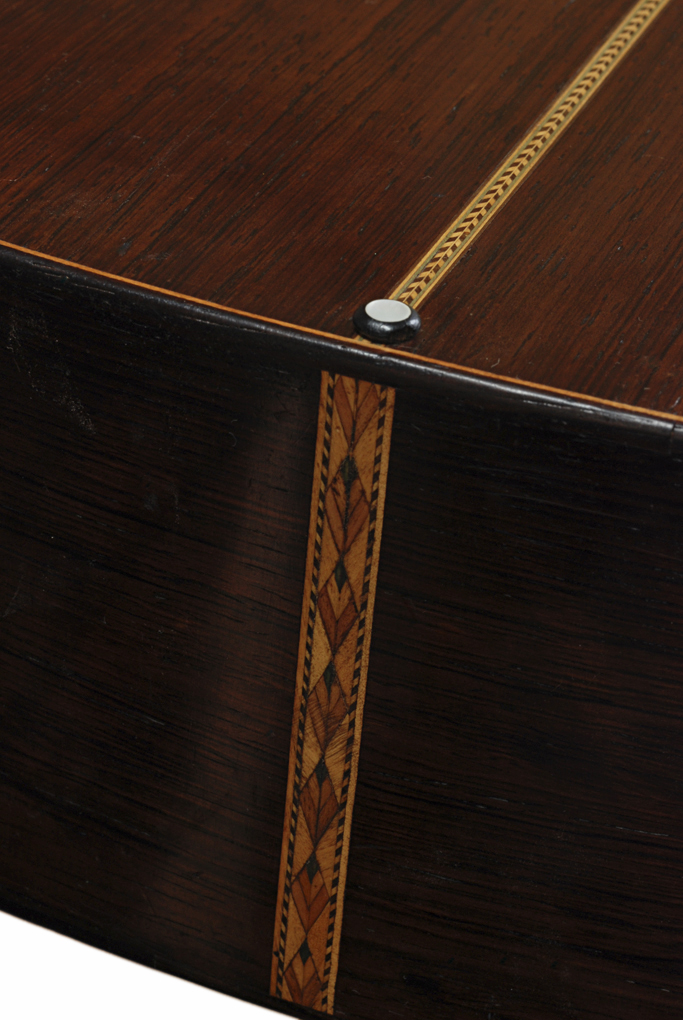HEAR A PIN DROP
The Evolution of Bridge Pins on Martin Guitars
While the pin style bridge is generally associated with steel string guitars, C.F. Martin used pin style bridges with gut strings for close to 100 years before introducing steel string guitars.
Here we trace the evolution of bridge pins used by Martin and his descendants through the years.
The earliest guitars of C. F. Martin in America were in the style of the Viennese instruments he learned to build before leaving his homeland, including a "moustache" pin style bridge with a fretwire saddle.
The early bridge pins were made of ebony with abalone dots.
A number of early Martin and Martin & Coupa guitars following those with the "mustache" bridge have a "badge" or "shield" style bridge, in either ebony or ivory, often with an added ivory pendant or "flower". Some ivory versions have a fretwire saddle similar to those on the Stauffer "moustache" bridges.
The "shield" style bridges also included bridge pins of ebony with pearl insets.
The earliest pin style pyramid bridge is only a slight step away from the "tie style" pyramid bridge, with a similar "lipped" or scooped back.
These pins have the flat heads typical of the period.
Martin 1850's 2-24
1850's "ZigZag" Martin Pearl rosette 1-28
The later round back pyramid bridge, made of ivory on higher end Martins until about 1919, shows the larger size of the early pearl insets.
1893 Martin 2-34
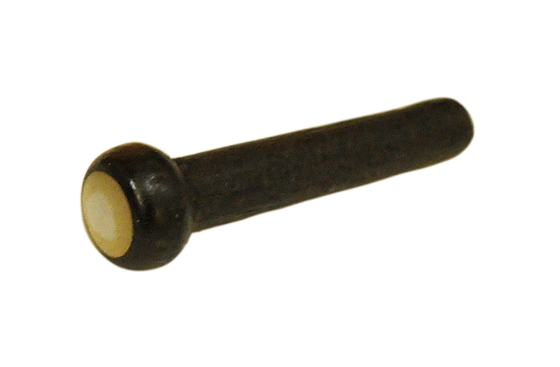
This 2 1/2 - 17 from 1889 shows the rounder pins with smaller pearl insets seen later in the Century.
1893 Martin 2-17
1896 Martin 2 1/2 - 42
Note that many 19th Century pins have heads that are wide and round.
1870's Martin Pins
1896 Martin 2 1/2 - 42
Pins with "eyes" seem to appear in two distinct periods.
This first pin comes from my unusual 1850's Martin which is similar to what is thought might be an early Style 28 with pearl rosette, but with a zig zag top border.
In the first decade of the Twentieth Century, and into the "Teens", some attractive bridge pins have "eyes".
By the turn of the Century, ivory pins begin to replace wood pins on fancier Martin guitars.
1905 00-42S
The pins with flatter heads typically have wider decorative insets than the pins with rounder heads.
Ebony pins typically have pearl insets, while the ivory pins have abalone insets which are often, but not always, quite decorative.
Note that the ivory pins with abalone are seen not only on the early Style 40's range of guitars, and even Style 34 Martins with ivory bridges, and Style 27 with abalone rosettes, but also on Style 26 and 28 Martins, which do have ivory bindings.
On the other hand, I have Style 30 and 34 Martins with ebony/pearl pins rather than ivory/abalone.
Headstock Buttons
Through much of the Nineteenth Century, Martin guitars with the optional ivory tuning "pegs" also included a peg or button the back of the headstock, sometimes made of ivory, but often made of horn.
Headstock with matching horn pin.
Style 42 headstock with ivory pin.
1894 Martin 0-42
End Pins
Most Martin guitars have an end pin on the lower bout made of the same material as the bridge pins.
c. 1855 2-23
1850's 2-24
1840's Spanish Martin with pearl diamond rosette.
Martin 1919 0-45
The end pin is sometimes made of horn, matching the button of the same material on the back of the headstock on guitars with optional ivory pegs.
1896 Martin 2 1/2 - 42
1893 Martin 2-34
1899 Martin 0-28
c. 1870's Martin 2 1/2 - 26
The "horn" Martin end pins are made in two pieces on an ivory shaft.
Back Pins
The earliest Martins sometimes have end pins on their backs, rather than on their end strips. These are seen on some of the earliest Martins, such as this Martin & Coupa.
After the earliest years, the back pin is most often seen on Style 20 Martins.
c. 1860 2.5-20
I have several Style 24 Martins, including two very similar early ones. The one appearing on the cover of the Gura book has a cedar neck and a standard end pin.
The other, also X braced but with an ebonized neck and ice cream cone heel, has a back pin.
My Martin & Coupa also has a black neck.
The back pins do not appear on Martins with strap pins on the headstock, which all have cedar necks.
This leads me to believe that the back pin was associated primarily with ebonized neck Martins in the 1840's, and was not seen on the "Spanish" Style Martin with cedar necks.
By the mid-1850's or 1860, the back pin appears to have become a regular feature of the ebonized neck Style 2 1/2 - 20, and also of those few Style 24 having an ebonized neck.
Some early Martins, usually high end presentation guitars, have no end pin at all.
vintagemartin.com
To See Robert Corwin's Classic Photography of Folk and Roots Musicians, visit:
For Information on Photography for
Exhibition, Publication, CD's, Promotion, Web Pages, Tour Books,
to Purchase Photographic Prints, or
If You Have Questions or Suggestions About This Web Site or Vintage Martin Guitars:
e-mail: Robert Corwinentire site copyright ©1998 through 2014 Robert Corwin/Photo-Arts. All rights reserved.
